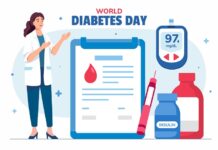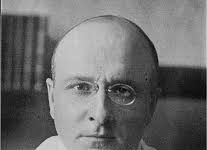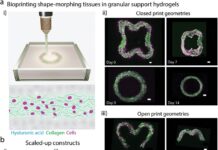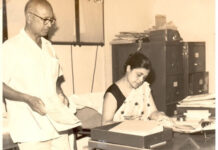Cardiovascular disease is one of the major causes of premature death in the world. It also contributes substantially to the escalating costs of healthcare. India contributes majorly to the statistics of cardiovascular morbidity and mortality.
In an interview, Dr Sharath Reddy, Senior Consultant Interventional Cardiologist, Director at Cath lab, and Director TAVR & Structural Heart Disease of Medicover Hospital, speaks to The Indian Practitioner. Dr Sharath has a vast experience in the field of cardiology and particularly in Chronic Total Occlusions (CTO). He is a fellow of cardiovascular angiography and interventions, USA, Fellow of American College of Cardiology, USA, Fellow of the American Heart Association, USA. He was the Director-Organizing Secretary of CTO Live India. His special interest is CTO and Complex Coronary Interventions, Transcatheter Aortic Valve Replacement (TAVR) and Structural Heart Interventions, Imaging-Guided Interventions, and Complex High-Risk and Indicated Percutaneous Coronary Interventions.
The Indian Practitioner (TIP): What is the role of CT coronary angiography in the diagnosis of ischemic heart disease as of today?
Dr. Sharath (Dr. S): CT angiogram is a non-invasive way of assessing coronary artery anatomies like conventional angiography where we insert a catheter through the hand or into the heart blood vessel. Then acontrast is injected which flows in the blood vessels and can be observed fluoroscopically. This is how invasive conventional angiographyworks. CT angiography is non-invasive wherein contrast is given into the peripheral vein in the hand and then the patient is put in a CT scanner to record the heart’s working at the fastest speed. Later on it is reconstructed to observe all the blood vessels. Current data and interpretation of blockages in CT angiography are similar to conventional angiography. When it comes to epicardial blood vessels, the proximal vessels can be studied using both conventional and CT angiography as these are almost equivalent. When it comes to distal vessels, conventional angiography has a slight edge over CT angiography in interpreting the degree of blockage. Since conventional angiography has luminography and dynamic imaging it gives good results. The degree of occlusion can’t be classified with CT angiography in patients with blockages beyond 50%. To classify the degree of blockage, we need conventional angiography. In younger patients, with a family history of premature heart disease, we always do CT angiography for those around 40-45 years of age to know the overall coronary situation for these patients;then we address them through preventive strategies and end up doing interventions to prevent emergencies and mishaps. When the possibility of blockage in coronary artery is low, in those patients with no co-morbidities, we do a CT coronary angiogram. In emergency situations where patients come with acute chest pain, and clinically having acute coronary syndrome and the patient is not willing to get admitted to the hospital, we can do CT angiography to know the cause behind the pain. We cannot do CT angiography when there is a high calcium score in the patients. Calcium interferes with the assessment of the degree of the lesion and here conventional angiogram is done as the suspicion of coronary artery disease is strong. Here, it is more about the severity of the occlusion and planning the next therapeutic option.
TIP: Is it likely to replace formal angiography, especially with the availability of flow algorithms for diagnostic purposes?
Dr. S: Conventional angiography has distinctive advantages over CT angiography. I don’t think CT angiography is going to replace conventional angiography anytime in the near future because most cardiologists and surgeons are used to conventional angiography currently to classify the degree of coronary artery blockages and make decisions based on that. To get the same comfort with CT angiography, all the cardiologists and surgeons have to unlearn conventional angiography and relearn CT angiography to become comfortable in taking therapeutic decisions. So, it might take a lot of time. Conventional angiography is part of therapeutic procedures. So, CT angiography, and therapeutic procedures are not done. Conventional angiography has a role in an acute situation and when it comes to definitive angina where you want to take therapeutic decisions and implement and execute them. In such patients, conventional angiography is going to give more comfort as therapeutic interventions can be done simultaneously. CT angiography definitely replaces conventional angiography in certain situations and in situations where there is diagnostic dilemma. But it is not going to replace conventional angiography when it comes to therapeutic intervention.
TIP: What are the new advances in stent technology, in peri-operative situations in particular, where the use of antiplatelet agents is tricky?
Dr. S: In patients where in we have to do non-cardiac surgeries after undergoing angioplasty, stenting of heart blood vessels is tricky as we have to discontinue blood thinners before we do non-cardiac surgery. With newer stent technology like thin strut stent, bioabsorbable material to carry drugs, newer stents like synergy and onyx stents by Medtronic. There is now data to discontinue the second antiplatelet agents, one month after angioplasties. We can then perform non-cardiac surgeries on patients.
TIP: What according to you are the most important factors to prevent recurrence after a successful percutaneous angioplasty?
Dr. S: After an angioplasty with a stenting procedure to the heart blood vessel, it is important for the patient to follow the secondary prevention method to prevent recurrent blockages in other vessels and re-blockage of the stent placed inside the blood vessel. For prevention, lifestyle modification and control of pre-existing co-morbid conditions like hypertension, diabetes and hypercholesterolemia are the mainstays. In lifestyle modifications, we always recommend the patient to quit high-risk behavior like smoking, alcohol intake, and also any other drug intake. This can help to prevent coronary artery disease. Treatment is suggested so that the patient’s blood pressure remains below 130/80 mmhg. In diabetes and renal failure cases and less than 140/90 mmhg in all other patients. The treatment for diabetes is such that fasting sugar is below 140 mg/dl and post-lunch, less than 182 to 200 mg/dl. In conditions of hypercholesterolemia, treatment is done to reduce LDL to below 70-100 mg/dl. But, in young patients, LDL can be reduced below 50 mg/dl. These doses are continued for all the patients and periodic re-check of sugar is done once in 3-6 months. Cholesterol re-check is done once in a year; blood pressure is measured with home BP monitoring once in 3-6 months. Patients are asked to continue antiplatelet agents and blood thinners. A minimum of 2 blood thinners are prescribed after 1 year based on the patient’s DAPT score and 1 blood thinner can be stopped which will be decided by the cardiologist treating the patient. Blood thinners should be continued in all the patients unless there is a reason to stop them which should be decided by the treating cardiologist.
TIP: Can percutaneous angioplasty be used for the treatment of left main and triple vessel disease as the primary modality?
Dr. S: Percutaneous interventions are a mainstay of therapy in most of the anatomy of coronary artery diseases except the left main coronary artery or left main bifurcation. In most of the studies in the last 2 decades, left main bifurcation with the high syntax call bypass is the first option because of high re-intervention rates in these patients at the bifurcation. In bifurcation stunting, early blockage rates are nearly 15 % when one stent is used and more than 20% when 2 stents are used, and more than 30% when 3 stents are used at LMCA. Because of these high re-occlusion rates, surgery still remains the mainstay of therapy in left main bifurcation. But, in patients with left main bifurcation with syntax less than 22 or less than 32, still, an angioplasty option can be suggested after explaining the possibility of stenosis and interventions to the patient and after discussing the patient’s anatomy in the presence of a surgeon and anesthetist, and interventional cardiologist. Unlike bifurcation, the left main ostium and left main body lesions have shown similar results to other angioplasties. So, the left main ostium and body without involvement of bifurcation are available for angioplasty solutions but bifurcation should definitely be the option. Bypass surgery should be considered as a therapy choice especially when the patient has high syntax for calcified vessels.
TIP: Is TAVR comparable to open AVR for younger patients who have longer expected survival rates?
Dr. S: Hybrid coronary revascularization (HCR) or hybrid coronary bypass is an approach for coronary interventions in which the advantages of bypass and stenting are coupled to devise strategies for the patient. So, minimally invasive bypass grafting is done with the left internal mammary artery to the left descending artery which increases long-term potency rates, followed by a few days to weeks. Later, stenting can be performed from the left main coronary artery to LCX, whose patency rates are much better than a Venus graft. 20% of the Venus grafts get included in the first year. But, LCX patency is much better than the Venus graft and that is the reason the hybrid coronary revascularization strategy is also a good strategy for left main disease patients.
Note: The views expressed in this interview are the expert’s own and are not endorsed directly or indirectly by The Indian Practitioner.


























